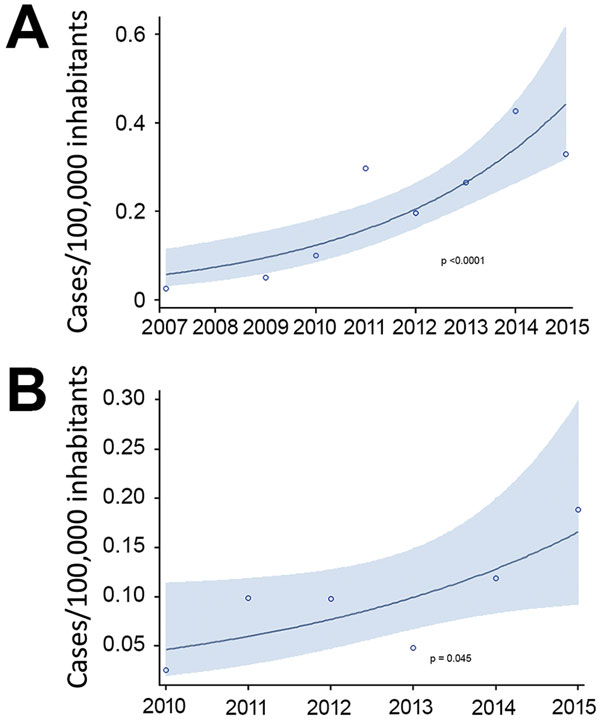Volume 24, Number 9—September 2018
Research
Emergence of Carbapenemase-Producing Enterobacteriaceae, South-Central Ontario, Canada1
Figure 1

Figure 1. Incidence of all carbapenemase-producing enterobacterial infections per 100,000 inhabitants, 2007–2015 (A), and bloodstream infections per 100,000 inhabitants, 2010–2015 (B), calculated by using a Poisson regression model, Metropolitan Toronto and the Regional Municipality of Peel, south-central Ontario, Canada, 2007–2015. Shading indicates 95% CI.
1Preliminary results from this study were presented at IDWeek, October 26–30, 2016, New Orleans, Louisiana, USA.
2Current affiliation: Cantonal Hospital, St. Gallen, Switzerland.
3Additional members are listed at the end of this article.
Page created: August 15, 2018
Page updated: August 15, 2018
Page reviewed: August 15, 2018
The conclusions, findings, and opinions expressed by authors contributing to this journal do not necessarily reflect the official position of the U.S. Department of Health and Human Services, the Public Health Service, the Centers for Disease Control and Prevention, or the authors' affiliated institutions. Use of trade names is for identification only and does not imply endorsement by any of the groups named above.